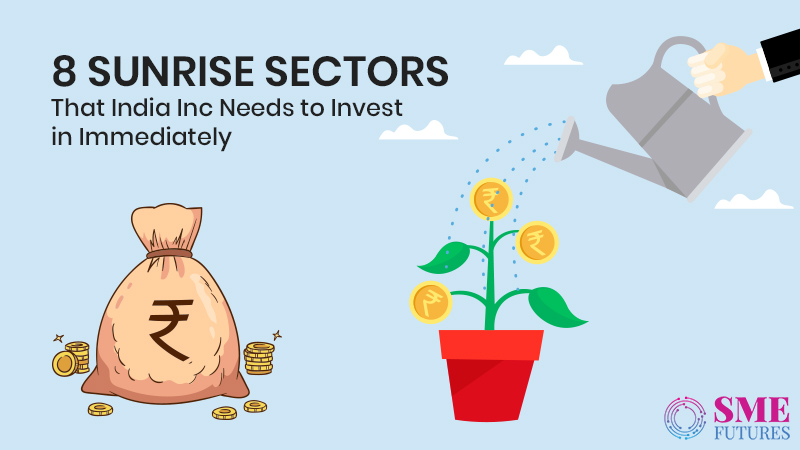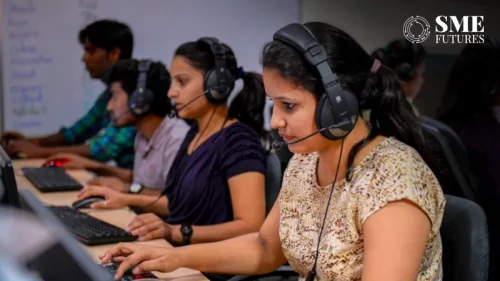One of India Inc’s greatest laments (when it is not professing protectionism) is that India missed a massive opportunity in the 1970s and 1980s. As Deng Xiaoping’s China undertook pro-capital reforms that enabled it to emerge as the factory of the world, India was in the middle of civil and political turmoil, highlighted by the Emergency, the regressive Janata government (1977-80), government missteps leading to Operation Bluestar and the Sikh insurgency, and the all-pervasive license-permit raj.
Though India’s reforms that started in 1991 (and are still a work in progress) have helped make our great strides, there have been a few missed chances that nevertheless pose huge risks. Meanwhile, China and the ‘Asian Tigers’ had sealed their dominance in the 90s.
As the lukewarm response to #MakeInIndia demonstrated, manufacturing has still lagged in India without land and labour reforms. Agriculture still locks up a large number of workers with tiny returns. Unfortunately, technical training is insufficient for several manufacturing industries, forcing young women and men to take up underpaid jobs. The failure of the Indo-Gangetic states to raise their education and healthcare levels are making them the new sub-Saharan Africa. The much talked about demographic dividend is thus at risk of being wasted. It poses an existential threat to India, with restless young people attracted to crime or radical movements, leading to a Somalia or Afghanistan-like breakdown of Indian society. Can these risks be avoided?
Also Read: Govt propels digitisation for innovative farming with slew of measures
This article will cheerfully say yes because India has been on this path once before. Following the 1991 reforms, India made a leapfrog, moving directly from an extractive economy (agriculture and mining) to a tertiary services economy, benefitting from a large, young and highly educated population in its southern metropolitan centres. While two generations since Independence hankered after the safety of government jobs, for the modern youth, a career in the big three – TCS, Infosys and Wipro – is the New Indian Dream. A new leapfrog is needed for India to cash in on its demographic dividend by plunging directly into the 4th Industrial Revolution. Here I list eight sunrise sectors that can bring an immediate return on investment:
Also Read: Post-announcement, India inc can now access union budget via a mobile app
- Agricultural Drones: Jobs such as seed broadcasting and application of fertilizers and pesticides can be easily automated with the help of drones and AI. This will enable better monitoring of fields and more even distribution and protect farmers from exposure to toxic chemicals.
- Pesticides have long been suspected of contributing to farmer suicides, so any shift away from manual handling of pesticides ought to be welcomed with both hands. Along with the innovation in rural finance (which I have written about extensively earlier), automation will free a lot of hands from unproductive agricultural jobs, allowing them to be trained sufficiently for manufacturing and services.
- Custom Manufacturing: India is reasonably well-electrified and has excellent 4G connectivity in its urban areas. It has a large enough population of highly educated people, especially in the STEM fields. Of course, all of this led to India’s rise as an IT superpower and Bangalore’s emergence as a verb. But beyond people staring at screens full of code is the opportunity for niche manufacturing that needs comparatively little investment. 3D printing, precision welding and custom manufacturing is the opportunity that is waiting to be seized with both hands. This requires far different skills from mass manufacturing, such as interpreting diagrams, 3D visualization, experimentation etc., rather than banging out identical products. Niche manufacturing requires specific parts to be assembled precisely for particular industries such as scientific instrumentation, robotics, satellite launches and space exploration. Even mass manufacturing facilities need niche parts (such as robotic arms). With a long tradition of handicrafts and precision manufacturing, with many partly moribund ITIs, with generous state support in the form of #SkillIndia and many research institutes powered by CSIR, India has a talent pool and infrastructure to exploit this opportunity. Just a little investment to get them across the finish line is required.
- Active Pharmaceutical Ingredients: This is one of India’s great tragedies that came to the fore during the current pandemic. Until the late 90s, India was a powerhouse in making the raw components of medicines, known as active pharmaceutical ingredients (which confer the medical properties). For example, acetaminophen is the API in several over-the-counter painkillers. Many facilities shut down in the last two decades as APIs were cheaper to import, especially from China. Reviving the manufacture of APIs is an opportunity, given current trade tensions between China and the OECD/G7 countries, strategic interest for India and a matter of survival for the Indian pharmaceutical industry.
Also Read: Covid fuelled substandard medical products in Indian markets: Report
5.Blockchain: In the last few years, the union government has focused on delivering social welfare schemes directly to beneficiaries through the digital medium for eliminating leaks and corruption. However, secure digital transactions are still a challenge with dependence on the creaking public banking system, sophisticated hacking and widespread illiteracy (forget digital literacy). Blockchain, the technology that underlay cryptocurrencies and is praised for keeping them honest, has been touted as a way forward. For India Inc. and the government, blockchain represents an advanced insecure and more honest accounting system, compliance and corporate governance, and efficiently distributes welfare.
6.Sustainable Plastics: Plastics present a particular problem for industry and government alike. While, on the one hand, their role in environmental degradation and climate change has been acknowledged, their role in enabling millions of poor people to access manufactured goods cannot be discounted. Whether in the form of clothing (synthetic fabrics), household goods (from water cans to tiffin boxes) or toys, they have allowed an increase in the standard of life. Saying that investing in research and development of biodegradable plastics and affordable plastic substitutes is the need of the hour is banal. What is now needed is to upscale manufacturing in this sector and provide sustainable goods to the consuming public, which will only be happy to switch if the price is right.
Also Read: Single-use plastic ban: Demand jumps up for wooden cutlery, trays, stirrers, ice cream spoons
7.Custom alloys: New technology requires new materials, from satellite parts (that can withstand intense electron bombardment) to ever-smaller semiconductor devices to new construction materials that can withstand climate change. New technologies like high entropy alloys (HEA) and metallic glasses are promising to the industry in the 21st century what aluminium and titanium did in the 20th. At the same time, the metal industry is changing fast. Nimbler players catering to niche customers are outpacing the large, over-exposed conglomerates, with their need for captive mines, slow innovation and environmental battles. With a significant base of materials research, a 3000-year (or older) tradition of metallurgy and vast mineral resources, it would be a tragedy if India missed this flight.
8.Renewable Energy: What would you call a country that gets eight months of monsoon winds, practically eternal sunshine, more than 7000 km of coastline and no end of rivers? If you are thinking of a renewable energy superpower, you are right – and wrong. While the potential exists, the costs have been inhibitory so far, leading India Inc. to shy away, barring a few early birds. But with the price of materials falling (though sadly with a high dependency on China for rare earth metals needed for solar panels) and the social and environmental costs of fossil fuels steadily rising, India Inc. needs a sharp uptick in investment. The government has already shown it’s willing, non-solar renewable energy is faster to get off the ground (and so, India has many windmills). The mineral resources for solar panels are available. A little capital and a lot of research (especially in piezoelectric materials, which can generate electricity from the force of falling rain) can get a country a long way ahead.
7.Shipping: Surprised to see it here? Trust me, one of the things holding up India’s growth is a lack of Indian shipping lines. A recent article by the former chief of the Indian Navy reiterated the lack of Indian shipping companies was a strategic threat to India, allowing Indian ports to be dominated by foreign liners. This lack can be rectified by amending the respective laws to enable Indian companies to buy and equip ships of all kinds, from container carriers to tankers. When a nation has enough vessels, it can honestly look at driving growth through exports.
A new sunrise is around the corner; are we ready to wake up for it?











